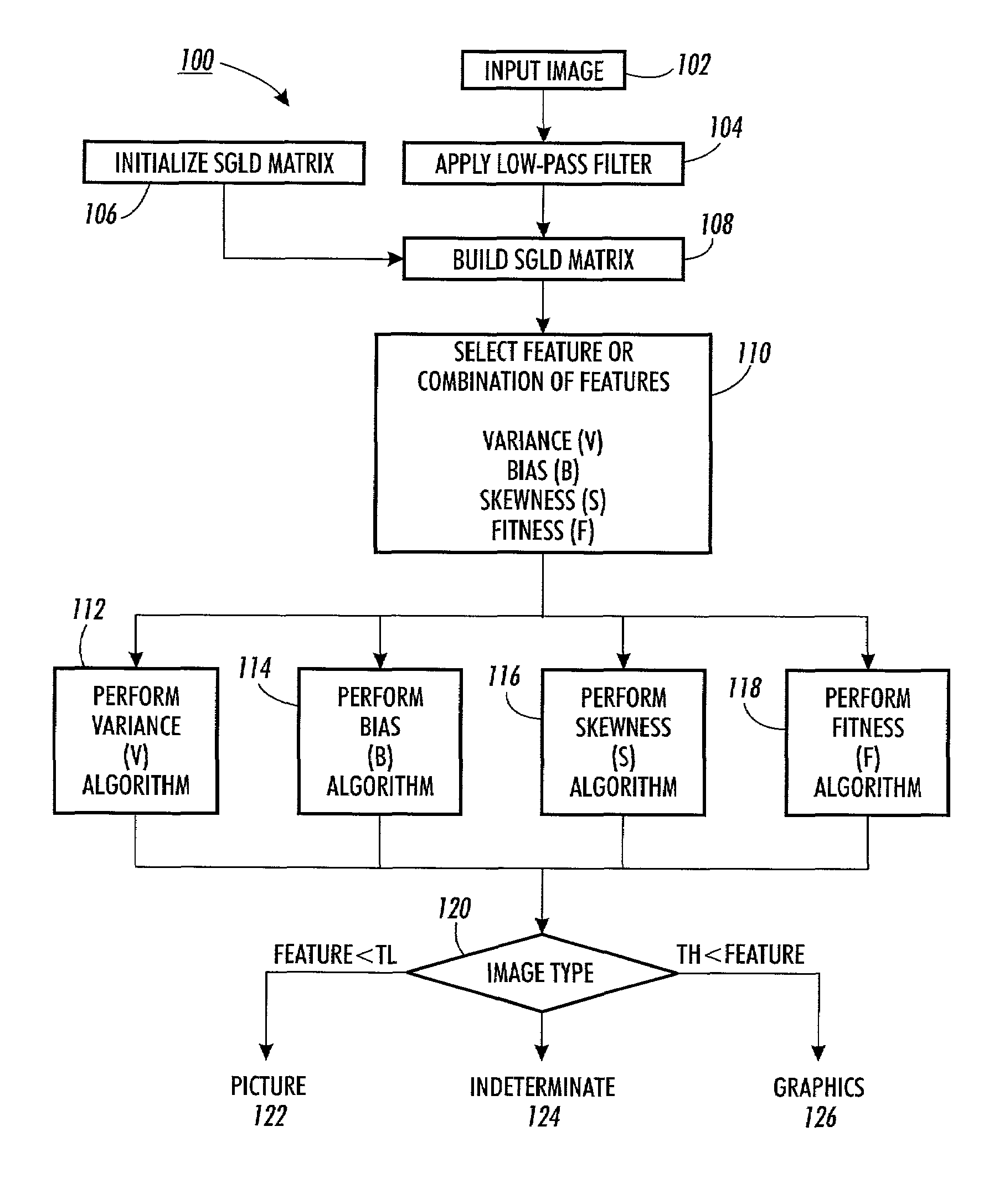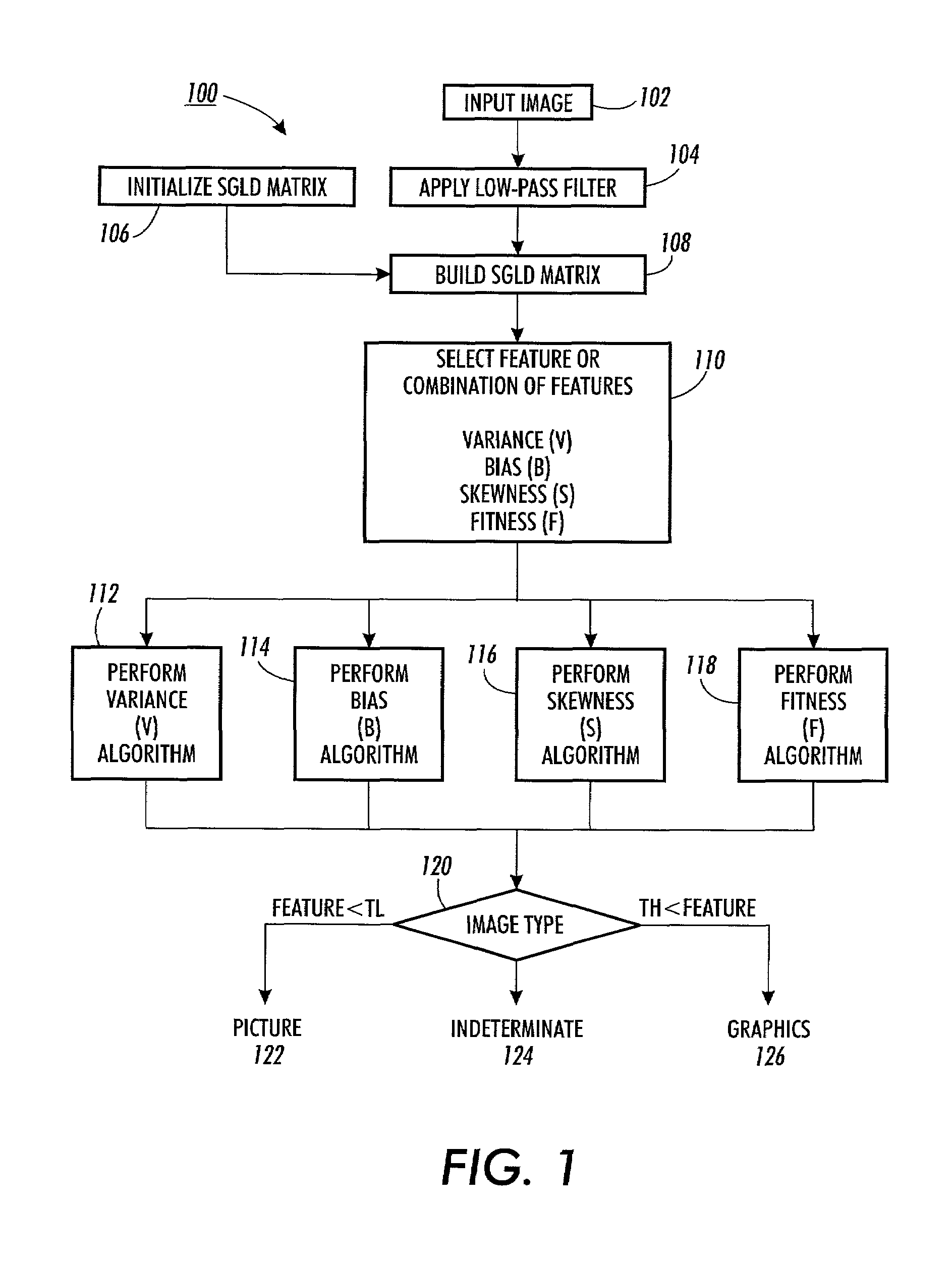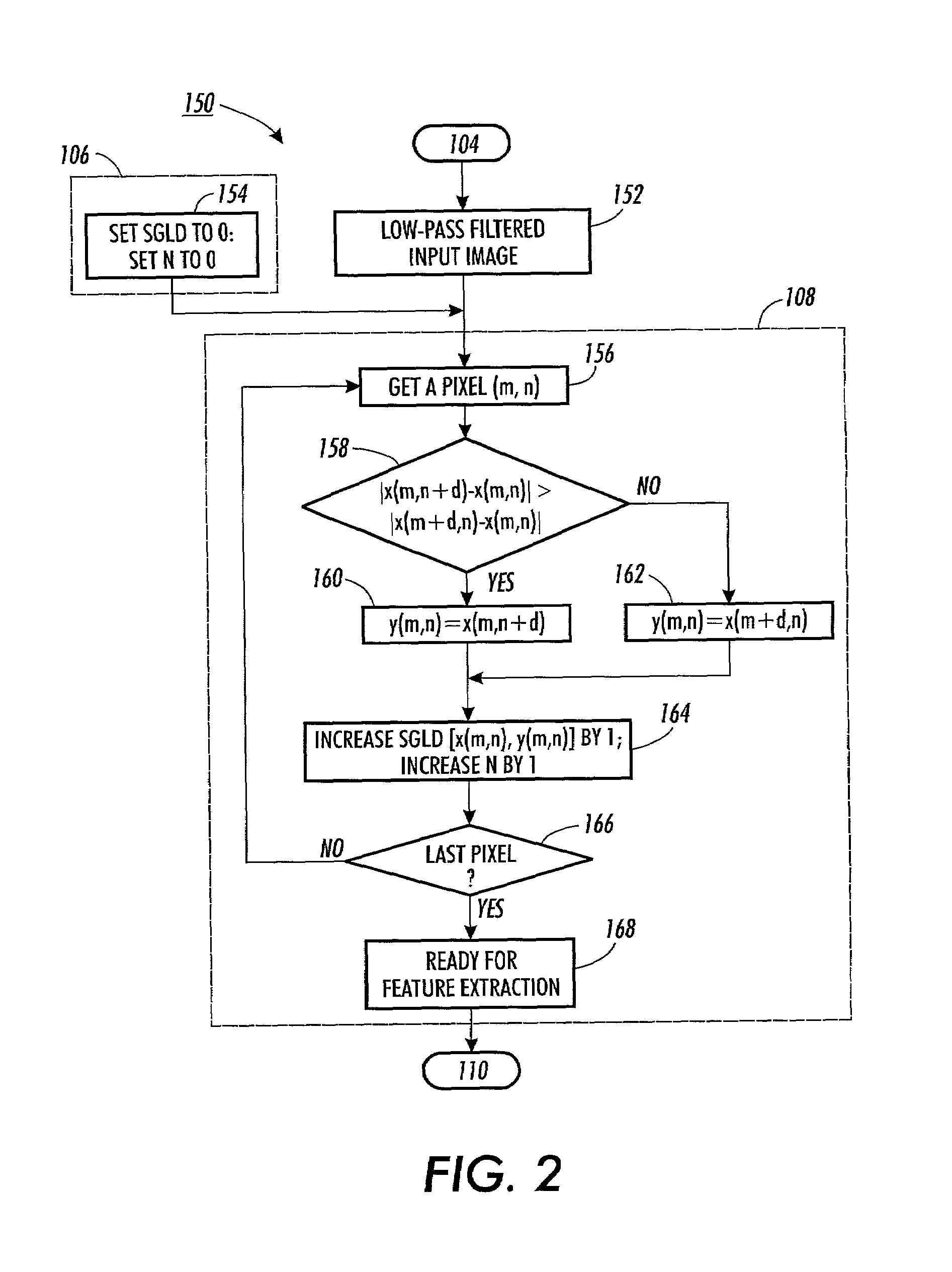Picture/graphics classification system and method
a classification system and graphic technology, applied in the field of image processing, can solve the problems of affecting the accuracy of image classification, so as to achieve less error, predict a confidence level, and reduce the effect of error
- Summary
- Abstract
- Description
- Claims
- Application Information
AI Technical Summary
Benefits of technology
Problems solved by technology
Method used
Image
Examples
Embodiment Construction
[0034]Spatial gray-level dependence (SGLD) techniques for image analysis are well known. SGLD feature extraction creates a two-dimensional histogram that measures first and second-order statistics of an image. These features are captured in SGLD matrices. This was originally proposed for texture analysis of multi-level images. Additionally, since texture features distinguish natural pictures from synthetic graphics, SGLD techniques can be applied to picture / graphics classification of images. A picture / graphics classifier can be created with algorithms that analyze the texture features captured in SGLD matrices. Using the SGLD texture features, the classifier works to determine whether a scanned image is a natural picture or synthetic graphics. Furthermore, in color images, the luminance component typically contains enough information to determine the origin of the image. Therefore, an SGLD matrix that captures the luminance component of an image and a picture / graphics classifier usi...
PUM
 Login to View More
Login to View More Abstract
Description
Claims
Application Information
 Login to View More
Login to View More - R&D
- Intellectual Property
- Life Sciences
- Materials
- Tech Scout
- Unparalleled Data Quality
- Higher Quality Content
- 60% Fewer Hallucinations
Browse by: Latest US Patents, China's latest patents, Technical Efficacy Thesaurus, Application Domain, Technology Topic, Popular Technical Reports.
© 2025 PatSnap. All rights reserved.Legal|Privacy policy|Modern Slavery Act Transparency Statement|Sitemap|About US| Contact US: help@patsnap.com



